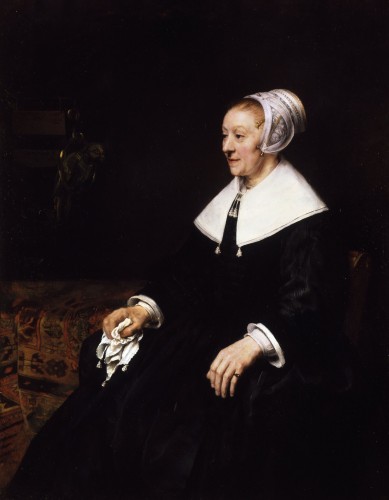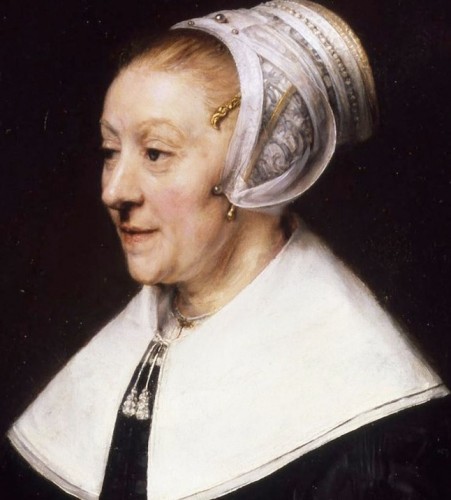Rembrandt’s Portrait of Catrina Hooghsaet has gone on display at the National Museum Cardiff for a three-year period. Last year, it was sold privately through Sotheby’s to a foreign buyer. The UK’s Culture Minister, Ed Vaizey, had a temporary export ban placed on the painting.
The portrait was bought in 1860 for the National Trust’s Penrhyn Castle in North Wales. In 2015 it could be seen in the Rembrandt: The Late Works exhibition at the National Gallery and the Rijksmuseum.
From the museum’s press release, 5 April 2016
The 17th-century portrait of a wealthy, independent, 50 year-old woman from Amsterdam was housed at Penrhyn Castle in North Wales until last year, when a private collector bought the work through Sotheby’s auction house.
It has now been offered to National Museum Cardiff as a long-term loan and will be shown at the city centre national museum in its historic art galleries. The Museum will also benefit from a donation of £10k from the previous owner of the painting, to fund an educational programme.
Rembrandt, through his work, had the ability to portray people as real human beings with character and emotion. Portraiture before his time was about status rather than personality. He painted with an honesty which revealed true individuals with immense sensitivity and insight.
The sitter herself was part of the Mennonite religious community in Amsterdam, but her parrot, which is portrayed in the work, and fine clothing reveal unconventional attitudes. She was unusual for her time in the fact that although she was married to a Mennonite preacher, they lived separately. Therefore, she must have been strongly independent, to sustain such an unconventional living arrangement, both in character and financially.
David Anderson, Director General, Amgueddfa Cymru – National Museum Wales said: “This is a very special work of art, which has great meaning and importance for Wales’ heritage. The painting came to Wales in the 1860s and is an example, not only of money, but of the cultural wealth generated by the great industrial age in Wales.” “I am delighted it will be made publicly accessible, and deservedly so, so that it can contribute to our understanding of our past and be enjoyed by today’s visitors.”
The owner of the painting added: “I am very happy to be able to share the enjoyment of this great painting with the public by lending it to the National Museum of Wales.”


